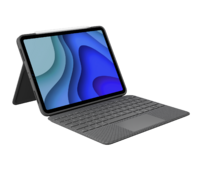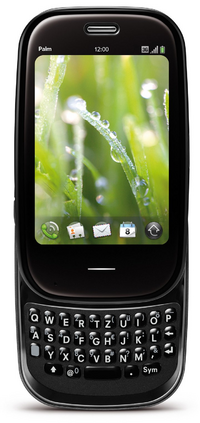Videocom
 Videocom Touch G7 | |
| Developer | Videocom |
|---|---|
| Type | Videotex (Televideo terminals) Smart cordless phone (Videocom terminals) |
| Launch date | 1979; 53 years ago |
| Current version | Videocom Touch G7 / 2 March 2031; 1 year ago |
| Platform(s) | Videocom |
| Operating system(s) | Videocom OS (Dedicated terminals only) |
| Status | Active |
| Members | 35 million registered users (2030) |
The Videocom, formerly known as Televideo prior to 2003, is a Castadillaan videotex online service accessible through telephone lines and the Internet, and is one of the last of such services still in operation, the other being Kirivia's MetNet. It was invented in Mauritius, Baia.
Initially rolled out experimentally on 12 March 1977 in Adouka, Rosaria, and from summer 1977 in other areas, the service was introduced commercially throughout Castadilla in 1979 by the GTA, a subsidiary of the NTCDC (now CastaTel). From its early days, users could make online purchases, make train reservations, check the news both local and international, search the telephone directory, have a mail box, and chat in a simiilar way to what is now made possible on the Internet.
In August 2003, Televideo was rebranded as Videocom, spun off from the GTA as a separate subsidiary of CastaTel, and went through a series of massive upgrades as part of an ambitious government programme. The result was that Videocom could be accessed on the Internet now, and that dedicated Videocom terminals would only be portable, with PCs replacing the previous non-portable terminals.
In 2031, Videocom has reported that the Videocom network has 35 million registered users.
Background
Further information: Electronic News Herald
From 1891, one of the most reliable methods of getting the news electronically in what was the Delepasian Confederation (now Castadilla) was through a news service over telephone lines known as the Electronic News Herald. Reliability of this "telephone newspaper" grew as the technology got perfected, soon expanding the service from just urban areas to now serving larger swaths of land. Even as radio became mainstream, the technology initially did not catch on in many areas of Delepasia despite its technological superiority. People saw no need to replace their subscription, especially as more and more options were added to maintain ENH's competitive edge in the region. However, with the introduction of television, most especially after television programmes were no longer sparse, many have decided that the convenience of sitting back and watching television was preferable to having to dial up an audio-only service that was quickly becoming old-fashioned.
In 1976, after Emperor Maximilian II was elected, the Blue Telecom Group (GTA) was tasked to create a new telephone service. One that used a video screen, made greater use of interactivity, and, most importantly, had to make use of a physical object that was not just the phone itself. In March of 1977, they began to experimentally roll out this new service to the city of Adouka, where it was met with great success from its test consumers. Encouraged, the GTA began to expand the service nationwide that summer where it was met with even more positive feedback. Satisfied, the service was christened Telévideo, a sort of portmanteau of videoteléfono, and was released commercially in 1979 alongside the Televideo 1 terminal.
Business model

The Blue Telecom Group intended for Televideo to serve as an electronic directory of telephone and address information so as to increase phone line usage while reducing the costs of having to print phone books and employing directory assistance personnel. Because the primary users of Televideo would be people who already have a telephone subscription, the terminals were given out at no additional cost to existing subscribers, and it served as an incentive for others to get a telephone subscription.
The GTA emphasised the idea of ease of use, boasting that a Televideo terminal would require only slightly more training than a simple toaster to operate. By offering a popular service on simple, free equipment, Televideo achieved a near-universal market penetration nationwide while at the same time avoiding any possible chicken and the egg scenarios which could have killed it. In exchange for a terminal, Televideo owners would only be given a paper copy of the yellow pages, with the white pages being exclusive to the Televideo where they can be accessed for free and could be searched through at a much faster speed than going through paper directories. According to the GTA, during the first two decades of nationwide operation, 16 billion pesetas were spent on purchasing terminals and subscription services, a profit of 7 billion RPT was made after deducting the payments the GTA had to give to information providers, and an average of 500 million pesetas annually were saved by printing fewer paper directories.
Technology

Televideo used computer terminals initially consisting of a text-only monochrome monitor, a keyboard and a modem, packaged into a single tabletop unit. These original terminals could make use of a set of block graphics characters to depict a rudimentary form of graphics. The monochrome units would soon be replaced with colour units in the mid-1980s. Compatible printers were also available.
Televideo used a separate network dedicated to the service, anticipating mass-usage nationwide and not wanting any potential problems in the future. When connecting to the Televideo network, the terminal's built-in modem generally dialed a short code number connecting to a PAVI (Punto de Acceso al VIdeotexto; "videotext access point") from the subscriber's analog telephone line. The PAVI would then be connected digitally via the Televideo network to the appropriate servers of the company or administration dialed.
The most commonly-dialed number was the prefix "00315", with "00317" being used by more expensive premium services. Billboard ads often consisted of nothing more than a company name, the "00315" number, and an appropriate image; the fact that a Televideo service was being advertised was made obvious by the ad's layout, comparable to the ubiquitous use of the ".com" suffix for later services on the Internet.
A Televideo terminal's modem allowed for a half-duplex asymmetric data transmission. Initially, it could downlink up to 1200 bits/s (9 KB/min) and could uplink up to 75 bits/s (0.6 MB/min). Thus, download speeds were actually pretty fast for its time. This system was known as the "12H/75", or "1.2K/75". Although it was intended for general-purpose data communications, it found the most use for Televideo and equivalent services worldwide.
Televideo terminals typically use the AZERTY keyboard, but variants using the QWERTY keyboard or even an ABCDEF keyboard layout exist in some models.
Televideo and the Internet

The rise of the Internet, helped along by the existence of web-like services found on Televideo, would chip away slowly at the online service. Although initially slow since early Internet necessitated the use of a phone line, when phoneless ways of getting online were making headway around the world, it was soon an inevitability that Televideo would, much like the Electronic News Herald before it, be rendered obsolete at its current state.
Many computers had far greater graphics capabilities and far more speed than the average Televideo terminal, which was rapidly becoming more and more old-fashioned by the year 2000 with its block graphics and limited use. There were even some proposals in the early 2000s to either discontinue the service or to replace it with an internet-based service catered to the average citizen.
To try and maintain a hold on the market, and to try to prevent redundancy, starting with the Televideo Express 1, released in 1992, all terminals would have an actual phone built right into the system, reducing the amount of phone line cables need to be connected down to one, which now could be used by both the phone and the terminal at once. These "all-in-one" terminals would be the basis for the Televideo Lite, released in 2003, and the subsequent terminals released under the Videocom brand.
Rebranding to Videocom

In 2003, as part of an ambitious government programme to modernise and retain the Televideo service in face of the advent of the Internet, Televideo underwent an extensive series of upgrades to bring the service to the 21st Century. Some of the major changes was a new way of access via the Internet as well as the discontinuation of tabletop terminals, it being replaced with PCs while any subsequent dedicated terminals would be portable that would be wirelessly linked to a modem which was linked by wire to the phone line. In light of these changes, Televideo was rebranded as Videocom in light of it no longer being exclusive to phone subscriptions, and was soon spun off as a separate subsidiary of CastaTel. Videocom's new business model now allowed for it to be given to ISP subscribers at no additional cost, much like it was back when the service was first launched in 1979. Other innovations included newer modems that could downlink and uplink at far higher speeds than before. These new modems could also be connected to an Internet modem or receiver, meaning that terminals had a quicker way to access the Internet.
The first post-upgrade terminal was the Videocom Rebirth Pilot, released in 2004. The device was the size of an average PDA, and had a retractable physical keyboard and a touchscreen with an appropriate pen. These new terminals were well-received, with Videocom reporting a net profit of 2 billion pesetas in the first eight years since the rebranding.
In 2014, it was announced that all future terminals, starting with the newly-released Videocom Touch G1, would take the form of a tablet, but would also be provided with a detachable physical keyboard which the consumer may use as needed. The most current iteration of the Videocom Touch is the G7, released in 2031.
Operating system
 Videocom OS 2.1.3 on a Videocom Rebirth III | |
| Developer | Videocom |
|---|---|
| Working state | Current |
| Source model | Closed-source |
| Initial release | 3 February 2004; 28 years ago |
| Latest release | Videocom OS 24.0.1 / 2 March 2031; 1 year ago |
| Repository | N/A |
| Platforms | All dedicated Videocom terminals released since 2004 |
| Official website | www.videocom.co.cs/os |


Videocom OS is used to refer to the operating system running in all Videocom terminals since the release of the Videocom Rebirth Pilot in 2004. Although the Televideo terminals used a videotex system, Videocom terminals now make use of a full-fledged dedicated operating system, which opens up additional interactivity in ways that were not possible under older systems.
Transforming the videotex service into a dedicated operating system also allowed for newer terminals to make use of the greater graphics capabilities that made the block graphics of old look incredibly tacky in comparison. This also meant that Videocom OS could be controlled using a touchscreen, thus rendering the physical keyboard essentially obsolete, though Videocom terminals have retained the keyboard, initially made to be retractable to maximise portability, for accessibility reasons similar to how post-2014 terminals come with a detachable physical keyboard.
The ability to connect to the Internet also allowed for the Videocom OS to become the go-to media centre operating system for most Castadillaan citizens due to the relative ease of getting a terminal at a very low cost. Having an Internet connection made it easier to install certain apps that transform what is essentially a smart cordless phone into a video or music player.
Although Videocom OS was initially a little difficult for new users to learn, Videocom OS 2.0.1, released in 2005, would give the user interface an upgrade to make it more user friendly and appealing, even giving the system a home screen where the user may access some of the more commonly-used applications such as the phone, the messaging service, the main Videocom application, and the Internet browser.
Starting with Videocom OS 10.0.1, released in 2008, a camera application would join the softwares that came pre-installed with the terminal. Market analysts have suspected that Videocom was trying to take advantage of the growing market for smartphones, fearing that the Videocom would become obsolete if they fail to include whatever new software that was being offered on smartphones. This trend has since slowed down ever since Videocom began to market the terminals as portable control panels for the house.
Terminals
Televideo (1979-2003)
- Televideo 1 (1979)
- Televideo 3 (1983)
- Televideo Express 2 (1995)
- Televideo Lite (2003)
Videocom (2003-present)
- Videocom Rebirth Pilot (2004)
- Videocom Rebirth III (2008)
- Videocom Touch G1 (2014)
- Videocom Touch G7 (2031)
